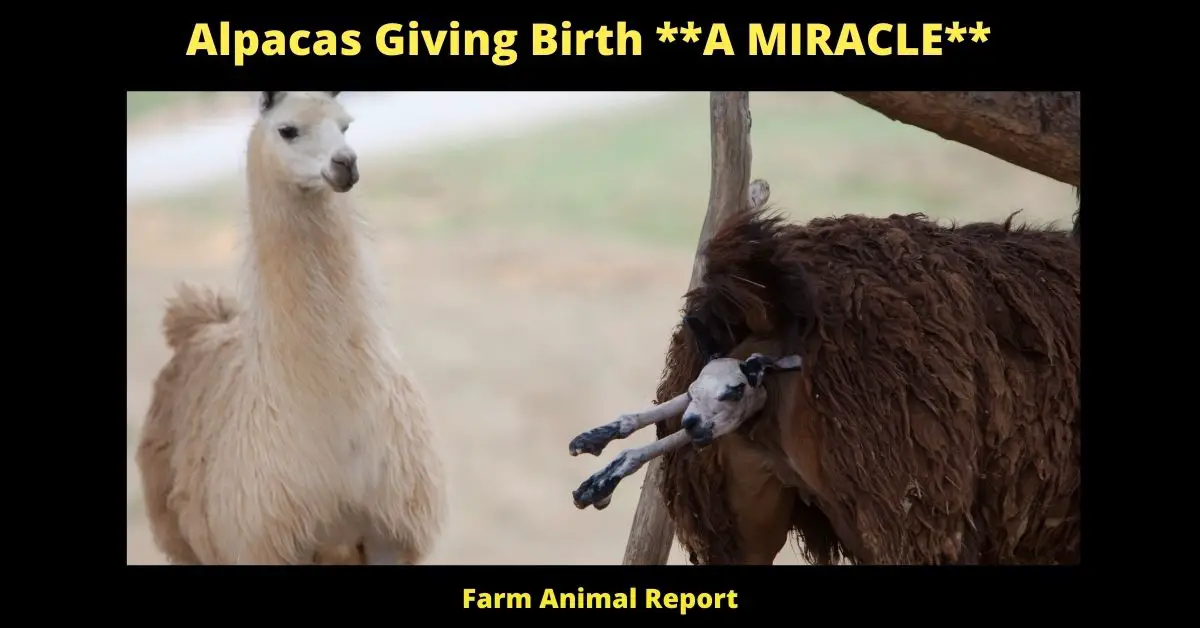Alpacas Giving Birth: A Guide
Many people are interested in alpaca birthing because it is a process that can be both fascinating and educational. It’s also the perfect opportunity to make some memories by taking pictures or videos of this life-changing event.
As a general rule Alpacas give birth standing up, so they usually don’t need any assistance from humans during delivery. The first sign of impending birth is an increase in nesting behavior, such as chewing on straw and building a nest for the new arrival. Contractions will start about 60 minutes before she gives birth and may continue for several hours afterward if there were more than one baby born at once.
What to Expect when an Alpaca is Giving Birth
Alpacas Giving Birth – When an Alpaca is beginning to give birth, she will start to breathe more rapidly and her body temperature may drop. She’ll also walk around the stable or pen looking for a secluded area that is out of view from humans. The process can last up to four hours, but most times it only takes about an hour between delivery of one baby and the second if there are twins.
The first baby will be born tail first and the second front end first. If there are twins, then both babies should come out belly to belly with one head pointed down toward the ground and the other aimed up towards mom’s backside.
After delivering her new babies, an alpaca mother may rest for about 30 minutes before standing up and cleaning the amniotic sac off of her babies. If she is unable to clean them, it may be necessary for a human caregiver to do so.
See Our Article BabyApacas: Predators DANGER
Signs that the Baby is Coming Soon
Signs that a female alpaca is getting close to giving birth include restlessness, sweating, and breathing more rapidly. The mother will also produce the hormone relaxin during this time to loosen her ligaments in order to allow for the birth of the baby. If you are around an alpaca that is giving birth, then it’s important not to panic or cause a disturbance if they begin pacing or lying down on their side.
The first sign that an alpaca is giving birth is a dark pink or black mucus discharge from the vagina, which may last for up to four hours. The amniotic sac will also be expelled from the mother’s body about 15 minutes before she gives birth and should contain one solid ball-like object if there are twins. If the sac is open, then this means that there are more babies on their way or that one of them has died inside of her uterus.
Jump To Section Weaning Alpaca Crias ***TEAT FEEDING**
If you notice an alpaca with these symptoms in labor, it’s best to stay back and allow her to give birth without interference so she doesn’t become agitated which could lead to injury.
See our Section Newborn Alpacas-Baby Alpacas-Extensive Guide
Ways to help During Labor and Delivery
An alpaca will usually give birth standing up, so there isn’t much that a human caregiver can do to help.
The most important thing is not to panic and stay calm when she begins pacing or lying down on her side because this may be her way of trying to induce labor by putting pressure on the baby in utero. It’s also important to make sure that she has plenty of room and privacy during this process.
Tending to an alpaca as she gives birth is not only a once-in-a-lifetime experience, but it can be very interesting too!

How to Care for a Newborn Alpaca
Once an alpaca baby is born, the mother will break open the amniotic sac with her teeth and begin licking their newborn clean. This process usually takes about 15 minutes before she stands up to start nursing for the first time.
If there were twins delivered during birth, then they may be lying together in a huddled ball, but the mother will eventually break them apart and begin licking each one.
An alpaca baby can stand on its own within 15 minutes of birth and should be dry after about an hour so it’s important to make sure they have a warm area for this time period. A newborn may also suckle from its mother as soon as she has given birth.
If you are around an alpaca giving birth, it’s important to check their mucus discharge four hours after they have finished birthing because this will indicate whether there were any complications during the delivery or if the mother is having problems with her placenta after birth.
It’s also good to keep an eye on the mother’s udder to make sure it doesn’t become too full or engorged because this could cause discomfort for her.
Final Thoughts
In summary, alpacas give birth standing up and without much human assistance. If you’re around one that is giving birth, then it’s important to make sure she has plenty of space and privacy while allowing her to go through the birthing process on her own terms.
There are many signs and symptoms indicating when a female alpaca will deliver, but one of the clearest indicators is a discharge from their vagina which could last for up to four hours. The birth process usually takes about half an hour and a newborn can stand on its own within 15 minutes, but it’s important to keep them warm until they have dried completely after one hour. After this time period has passed, then you may want to check the mother’s udder for signs of engorgement which can cause discomfort.
The first baby will be born tail first and the second front end first. If there are twins, then both babies should come out belly to belly with one head pointed down toward the ground and the other aimed up towards mom’s backside.


